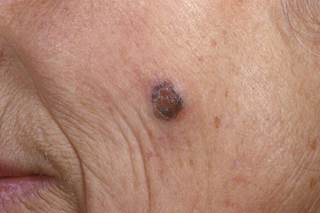February 26, 2019

Factors positively associated with MIR included dermatologist density, percent of the population that is non-Hispanic white, and average household income.
States with a higher count of total physicians per capita and a larger percentage of non-Hispanic whites have worse survival rates for melanoma, while more dermatologists per capita and more National Cancer Institute-designated Cancer Centers (NCIDCCs) appear to be correlated with improved melanoma survival, , according to a study published in Journal of the American Academy of Dermatology.
The current study was designed to evaluate possible healthcare-based and sociodemographic predictors of melanoma survival differences in the United States using the melanoma mortality-to-incidence ratio (MIR). United States Cancer Statistics data from 1999 to 2014 were used to calculate state-based MIRs, and linear regressions and Pearson correlations were used to identify associations between MIRs and primary care provider density, dermatologist density, number of physicians by state, healthcare spending per capita, percentage of uninsured, number of National Cancer Institute-designated Cancer Centers, racial/ethnic makeup of the population, average household income, and percentage with a bachelor’s degree.
The overall mean MIR was 0.15±0.04, with Alaska as an outlier at 0.24±0.03. MIR in most states decreased over time. Factors positively associated with MIR included dermatologist density (P <.001), percent of the population that is non-Hispanic white (P <.001), and average household income (P =.01). Factors that were negatively and significantly associated with MIR included primary care provider density (P =.001), number of physicians (P =.002), NCIDCCs per state (P =.02), healthcare spending per capita (P <.001), percent of population with a bachelor’s degree (P <.001), and percent of population that is Native Hawaiian/Other Islander (P <.001), Asian (P =.01), Native American/Native Alaskan (P =.01), and Black (P <.001).
No significant associations were seen between the percentage of uninsured and MIR. Only the percentage of the population that is non-Hispanic white (P =.004) and the number of active physicians (P =.02) remained significantly associated with MIR after multivariable regression analysis. Significant Pearson correlations were found between MIR and melanoma incidence (r=0.72, P <.001), dermatologist density (r=0.32, P <.001), NCIDCC count (r=-0.12, P =.001), and melanoma mortality (r=0.38, P <.001).
Limitations included reporting difficulties and database inaccuracies, limited data on melanoma thickness and staging, census-based demographic data, and lack of insight into intra-state disparities.
Study investigators concluded that, “states with more physicians (i.e., higher total physician count, not just dermatologists) per capita and a larger percentage of non-Hispanic whites had higher MIRs, or worse survival. We also found that intrinsic differences between states accounts for the vast majority of variance in MIR, suggesting the need for local evaluation and policy changes.”
Reference
Hopkins ZH, Moreno C, Carlisle R, Secrest AM. Melanoma prognosis in the United States: identifying barriers for improved care [published online January 16, 2019]. J Am Acad Dermatol. doi: 10.1016/j.jaad.2019.01.003